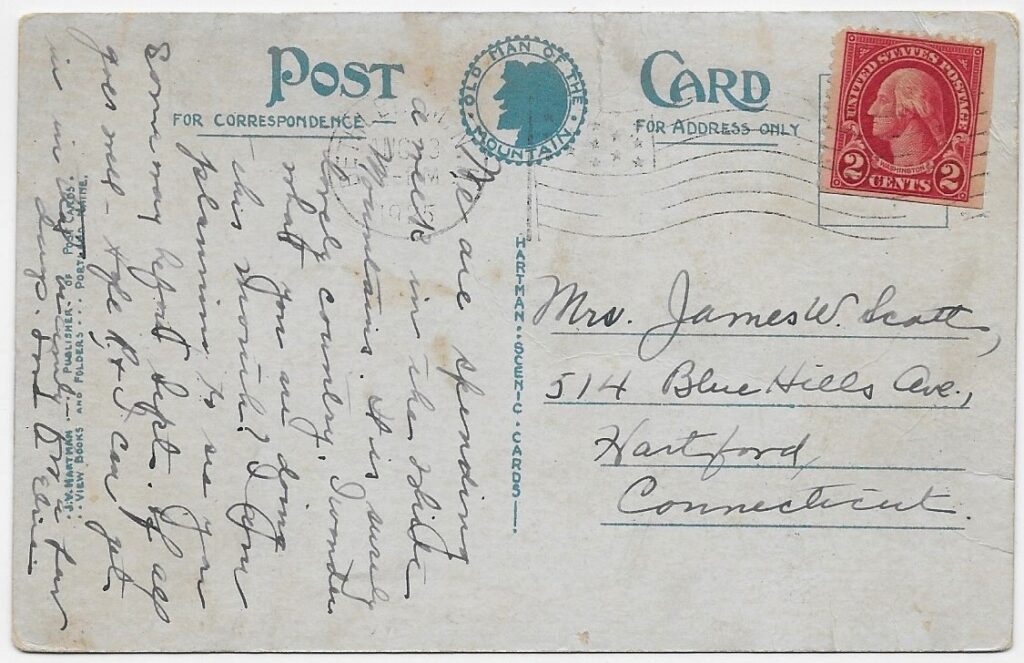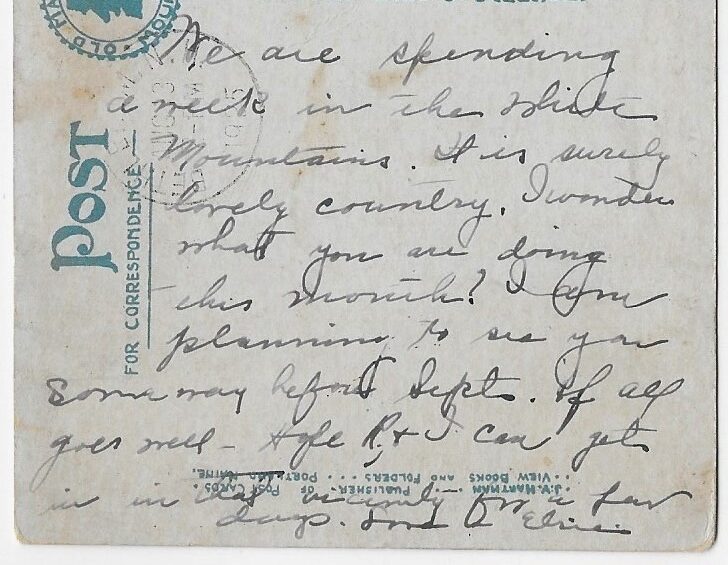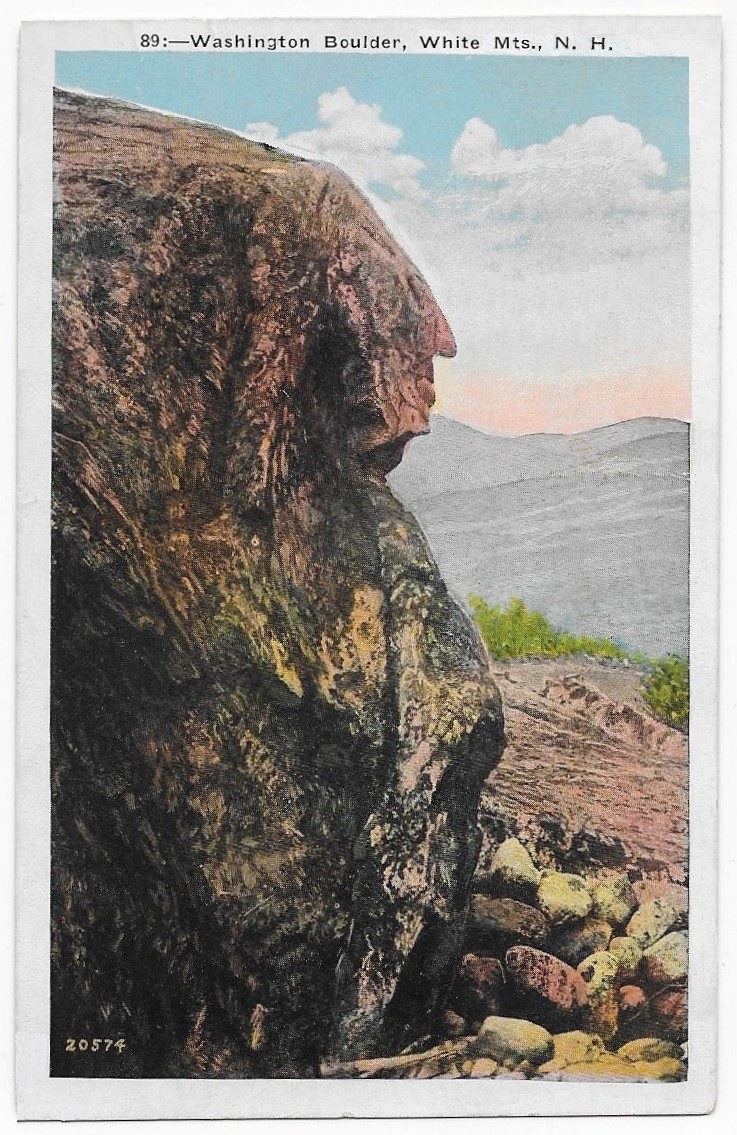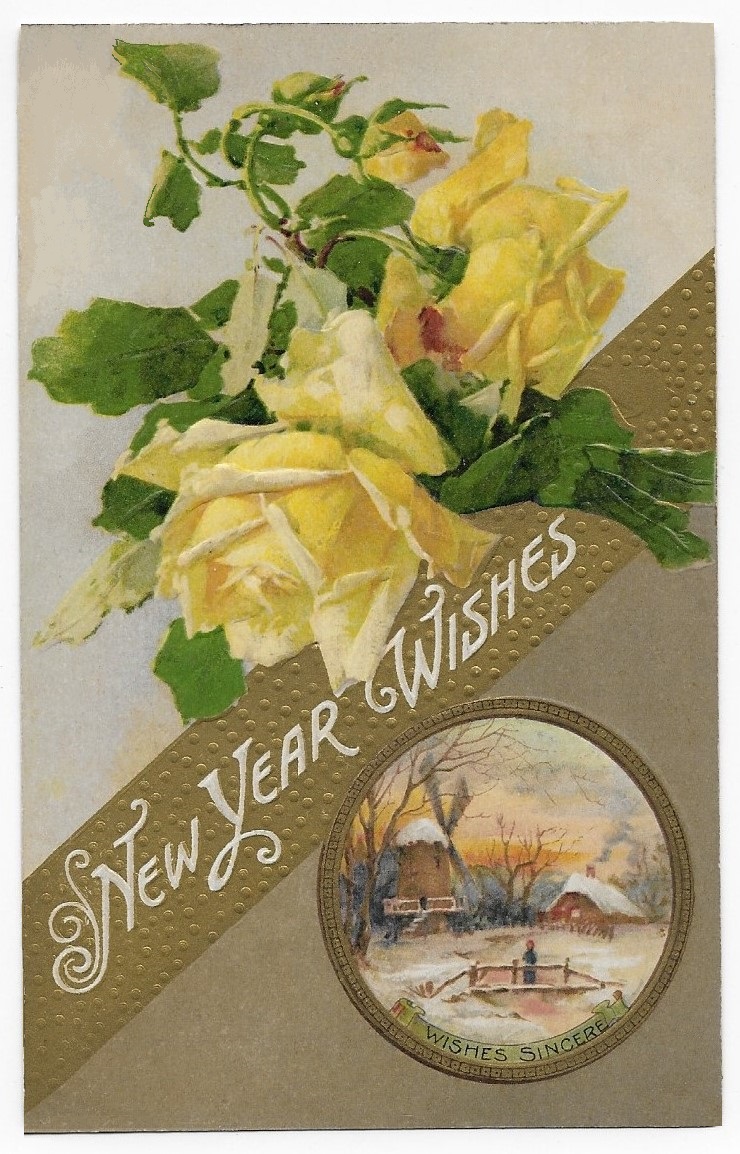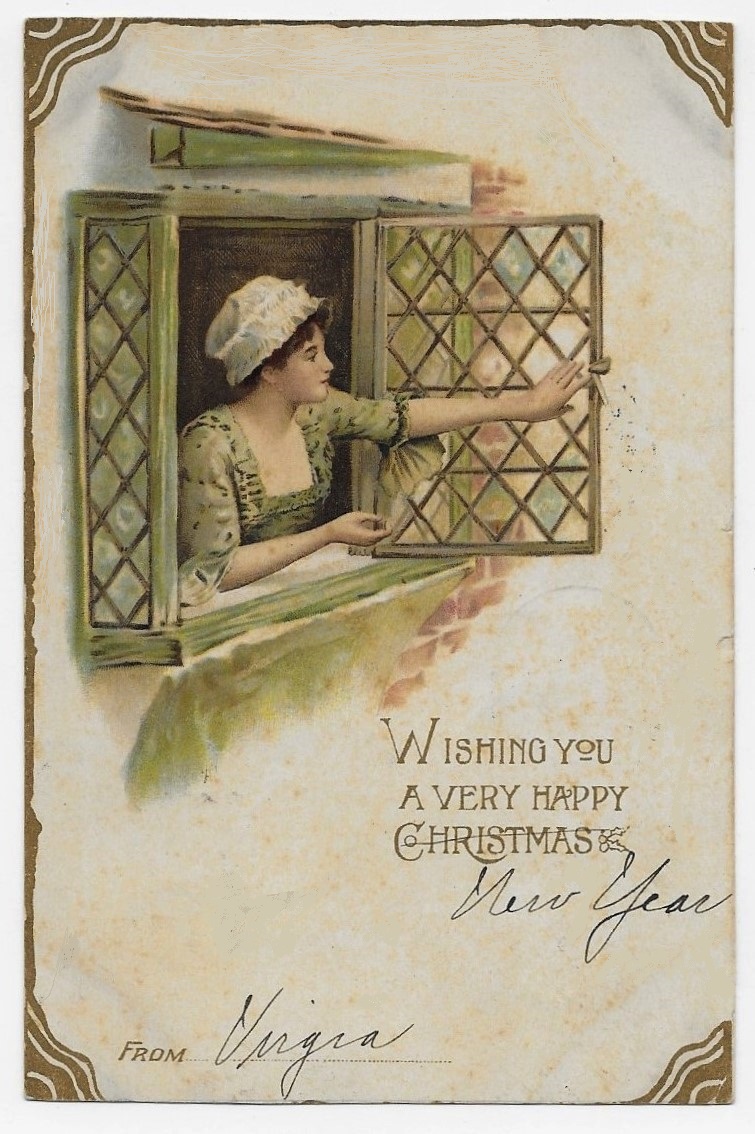Mrs. James W. Scott lived in Hartford, the prosperous business center and capital city of Connecticut.
Founded in 1635, Hartford is one of the oldest cities in the US; for several decades after the Civil War, Hartford was the richest city in the country.
Hartford boasted the oldest public art museum, oldest public park, oldest continuously-operated newspaper, and the nation’s first school for deaf children.
https://en.wikipedia.org/wiki/Hartford,_Connecticut
In August of 1925, Mrs. Scott received a postcard from Elsie.
Elsie mailed the postcard from Bethlehem, a hillside town in Grafton County of west-central New Hampshire.
Settled as an agricultural village, the area developed saw mills, grist mills, and starch factories in the 19th century.
When the railroad arrived in 1872, Bethlehem was transformed into a Gilded Age resort.
Eventually, more than 30 hotels were erected along a two-and-a half-mile raised Boardwalk.
Seven trains arrived daily to the five depots at Bethlehem Junction, and enormous “cottages” began to appear on the slopes around this “highest city in the White Mountains.”
https://en.wikipedia.org/wiki/Bethlehem,_Pennsylvania
+ + + + + +
The face of the postcard is an image of “Washington Boulder”, an outcropping of rock that suggests to some the profile of George Washington.
The profile was first photographed and publicized by A. E. Phinney, s photographer who operated a studio in Jackson.
https://www.visitmwv.com/posts/rock-formations-in-mt-washington-valley-nh
(Another rocky profile, of Benjamin Franklin, can be reached by hiking into the area around Jackson.)
Located in Carroll County of east-central New Hampshire, Jackson borders the White Mountain National Forest on three sides.
Like the town of Bethlehem, Jackson was visited by artists of the White Mountain School and also experienced a boom in tourism with the coming of the railroad.
Jackson is about 40 miles east of Bethlehem.
https://en.wikipedia.org/wiki/Jackson,_New_Hampshire
The State of New Hampshire had a more famous rocky profile, “The Old Man of the Mountain”.
We saw a vintage view of that White Mountain phenomena in an earlier postcard story, “A Natural Wonder for Mrs. Whitman”.
The “Old Man”, formed by the cycle of freezing and thawing that fractures the rock face, collapsed (from the same process) in May of 2003.
The “Washington Boulder” seems to be intact.
+ + + + + +
On the reverse, Elsie reports that “We are spending a week in the White Mountains…”
Elsie and her party have found that “it is surely lovely country.”
The writer wonders what Mrs. Scott is doing this month, and announces her plan “to see you … before September.”
“If all goes well”, Elsie hopes that “R. and I can get (unintelligible) that vicinity a few days.”
The message is sent with “Love”.
One hopes that Elsie continued to enjoy her week in the mountains, that Mrs. Scott was thrilled by the postcard, and that the frineds were able to meet before the end of the summer.
